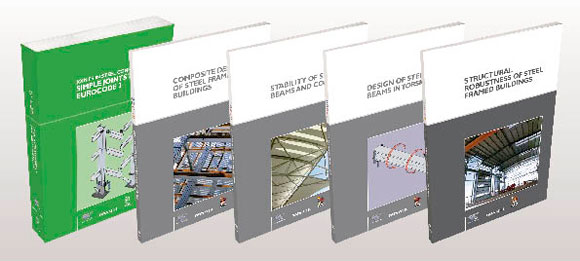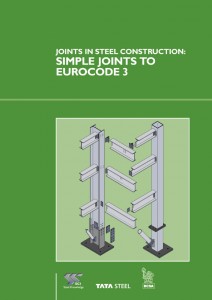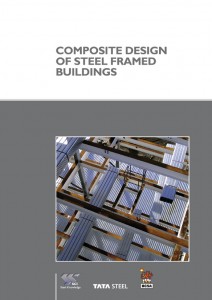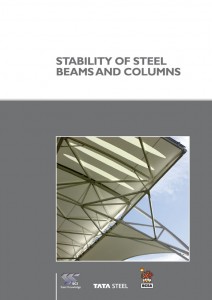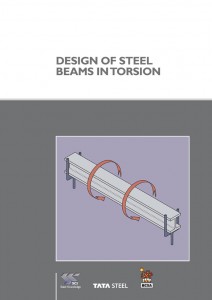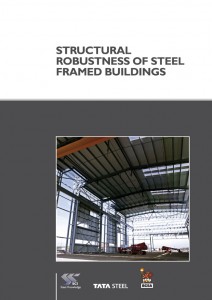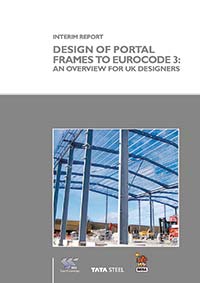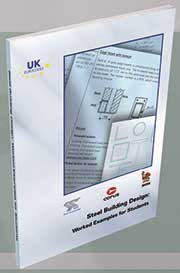Technical
Supporting the sector’s change to Eurocodes
The BCSA and SCI have added five new publications to their range of Eurocode design guides covering structural steelwork for buildings.
The British Constructional Steelwork Association (BCSA) and SCI have published a second tranche of Eurocode design guides covering structural steelwork for buildings.The five new guides are the latest deliverables in a significant programme of work which will ensure that when designers start using Eurocode design, comprehensive support is available.
Building on the success of the first tranche (published in 2010, see NSC January 2010), the guides fully demonstrate the steel industry’s desire to continually assist engineers with the design of efficient steel buildings to the new Eurocode.
The five new guides cover:
- Simple joints to Eurocode 3 (P358)
- Composite design (P359)
- Stability of steel beams and columns (P360)
- Beams in torsion (P385)
- Structural Robustness (P391)
More guides in the Eurocode series are already in the offing, including guidance on the application of BS EN 1991-1-4 (wind actions), the design of portal frames, moment resisting connections, fire resistant design and a Eurocode version of the Handbook of Structural Steelwork (the Red Book).
“This is an on-going programme for the benefit of the steel sector,” explains Chris Dolling, BCSA Manager, Technical Development. “We will be publishing more guides as the use of Eurocodes increases.”
Of the five new guides, two cover subjects, connection design and the design of composite members, which are clearly part of a structural engineer’s everyday work.
“The other three publications were identified as high priority guidance by a survey of the design community,” explains David Brown, Associate Director of SCI. “Although all five publications are revising existing guidance to BS 5950 to suit the requirements of the Eurocodes, the opportunity has been taken to update the guidance wherever possible to match current design methods and construction practice.”
Publications, however, form only one part of the comprehensive support provided by the steel sector. SCI for instance offers courses to keep engineers updated with the latest developments within the industry. Courses are run throughout the UK and the Republic of Ireland and vary in content and duration, ranging from one and two day technical courses to four hour seminars.
As experts in steel design, the SCI have also prepared a course to introduce designers to steel building design to EC3. This one day course offers an overview of the Eurocode suite design document and the critical importance of the National Annex. Loading and load combinations, frame stability, brittle fracture, member resistance and connection design are all explained in this course. For further information on SCI courses visit www.steel-sci.org/Courses
There is also a raft of information available to designers on the web, such as Access-steel (www.access-steel.com). This service has been funded by seven European steel producers, including Tata Steel, with support from the European Union and developed by a consortium of technical institutes in the UK, France, Germany, Spain and Sweden. In addition, the sector has also developed a NCCI site (referenced in the UK National Annexes to the Eurocodes) that contains much helpful information on the design Standards themselves. (www.steel-ncci.co.uk)
The five new BCSA, SCI design guides
Simple joints to Eurocode 3
This is a Eurocode version of the “Green Book”, and follows the familiar format of the BS 5950 version, with detailed design checks, worked examples and the yellow pages of connection resistances. Full depth end plates, which are still relatively thin and allow the connection to behave as nominally pinned are included. The particular attraction of this form of connection is a much enhanced tying resistance, compared to the previous partial depth end plates.
Composite design
This is a comprehensive guide to Eurocode 4, covering slabs and beams during construction and in the final stage, including design for the serviceability limit state. The guide covers construction stage loading (which is not entirely clear in the Eurocodes) and the fire design of composite members. It also makes reference to the background material which informed the new codified guidance for composite construction that appeared in 2010 when BS 5950-3.1 was revised (and then withdrawn). This may be viewed as complementary to the basic EC guidance.
Stability of steel beams and columns
The buckling resistance of a steel member is always a critical check – which depends on the restraint conditions at the ends and at any intermediate positions. The degree of restraint depends on the construction details. This publication explains the structural mechanics of buckling and provides immediate practical guidance for both common and non-standard restraint conditions.
Beams in torsion
The design of beams subject to bending alone is straightforward – but the addition of torsion makes the verification rather more involved. The new guide explains the physics, provides section properties needed for design and includes six numerical worked examples demonstrating design to the Eurocode.
Structural Robustness
Robustness is a key requirement for the design of buildings to limit the likelihood of disproportionate collapse as a result of an accident. This publication provides good practice guidance in accordance with the Eurocodes and the UK Building regulations. Six examples demonstrate the application of robustness strategies to different classes of building.
A complete list of Eurocode guides
P356 Composite Highway Bridge Design
P358 Simple Joints to Eurocode 3
P359 Composite Design
P360 Stability of Steel Beams and Columns
P361 Introduction to Eurocodes
P362 Concise Eurocodes
P363 Design Data (The “Blue Book”)
P364 Worked Examples – Open Sections
P365 Medium Rise Braced Frames
P374 Worked Examples – Hollow Sections
P385 Beams in Torsion
P387 Worked Examples for Students
P391 Structural Robustness of Steel Framed Buildings
BCSA Publication 53/10 Eurocode Load Combinations for Steel Structures
The guides are available at www.steelbiz.com, or can be purchased from the SCI bookshop, www.steel-sci.com/SCIBookshop/








